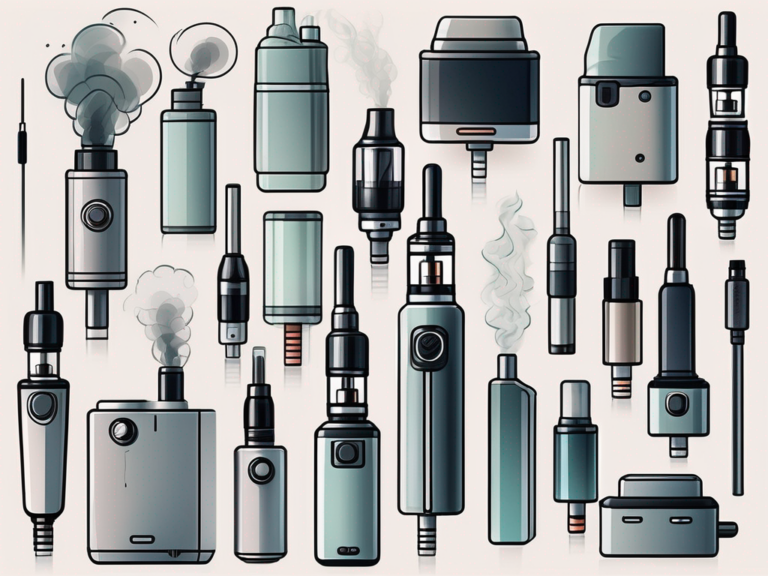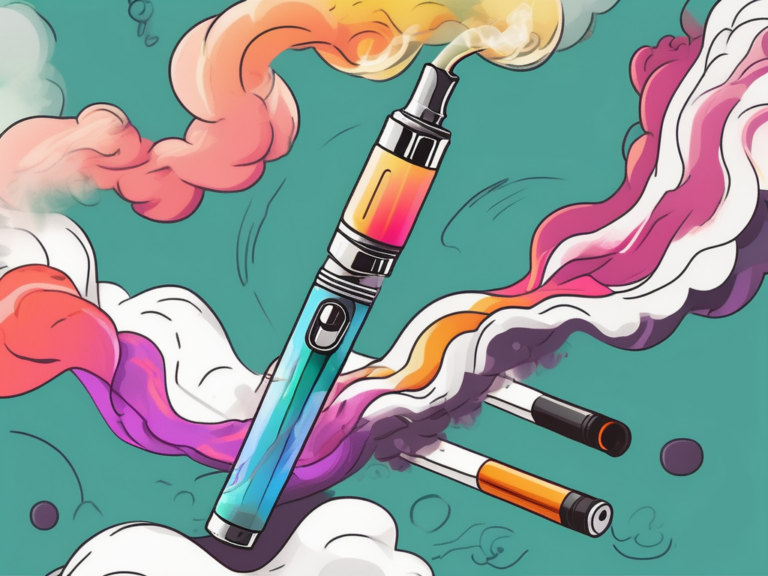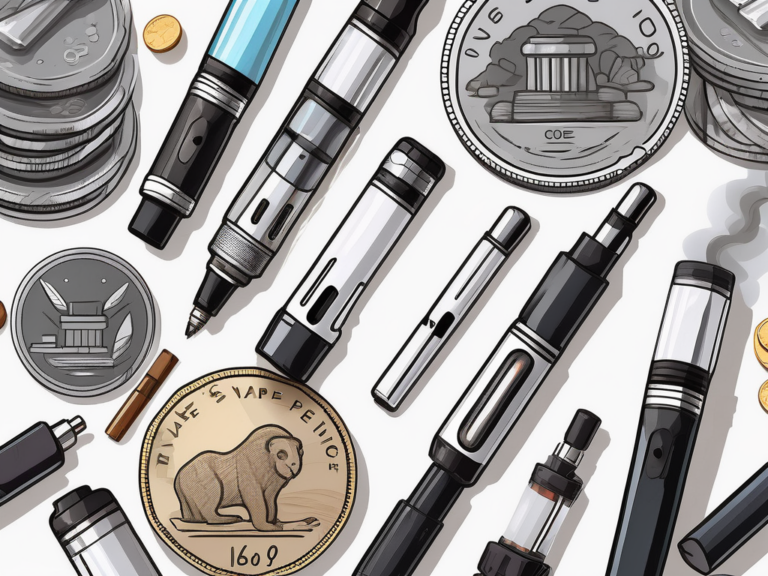why were vapes invented
In recent years, the popularity of vaping has skyrocketed, but have you ever wondered why vapes were invented in the first place? In this article, we will delve into the fascinating world of vaping, exploring its origin, its impact on public health, and the future of this revolutionary technology.
Understanding the Concept of Vaping
Before we dive into the history and motivations behind inventing vapes, let’s first understand the concept of vaping itself. Vaping refers to the act of inhaling and exhaling aerosol, commonly known as vapor, produced by an electronic device called a vape. This vapor is created by heating a liquid, known as e-liquid or e-juice, which usually contains nicotine, flavorings, and other additives.
Vaping has become a popular alternative to traditional smoking, with many users citing reasons such as harm reduction and the ability to control nicotine intake. The sensation of vaping is often described as similar to smoking, but with a wider range of flavors and customization options.
The Basic Components of a Vape
A typical vape consists of a few key components. The first is the mouthpiece, which allows the user to inhale the vapor. Connected to the mouthpiece is a cartridge or tank that holds the e-liquid. Inside the vape, there is a heating element called a coil, which vaporizes the e-liquid when activated by a battery. Finally, modern vapes are equipped with various controls and settings to customize the vaping experience.
Coils are an essential part of the vaping experience, as they come in different materials and resistances, affecting the flavor and vapor production. Some vapers prefer higher resistance coils for a tighter draw, while others opt for lower resistance coils to produce more vapor.
Different Types of Vapes
Vapes come in a wide variety of shapes and sizes. Some vapes resemble traditional cigarettes and are known as cig-a-likes. Others are larger and more customizable, allowing users to adjust the wattage and temperature for a tailored experience. Additionally, there are specialized vapes designed for specific purposes, such as pod systems for convenience or box mods for advanced users.
Advanced vapers often engage in “cloud chasing,” a practice focused on producing large vapor clouds through specialized equipment and techniques. This subculture within the vaping community emphasizes the artistic and competitive aspects of vapor production, with enthusiasts participating in cloud chasing competitions to showcase their skills.
The History of Vaping
To understand why vapes were invented, we must turn back the clock and explore the fascinating history of vaping. While the exact origins of vaping are difficult to pinpoint, the concept of inhaling vapor dates back several centuries.
Delving deeper into the early beginnings of vaping reveals a rich tapestry of cultural practices and technological innovations. Ancient civilizations such as the Egyptians were known to indulge in the inhalation of vapor for both medicinal and recreational purposes. The ancient Egyptians would heat herbs and oils on hot stones, creating aromatic vapors that were believed to have healing properties. This practice of vapor inhalation not only demonstrates the long-standing human fascination with inhaling vapors but also highlights the cultural significance of vaping throughout history.
The Early Beginnings of Vaping
Believe it or not, the first recorded instance of vapor inhalation can be traced back to ancient Egypt. They would heat herbs and oils on hot stones, and then inhale the resulting vapor. Fast forward to the 20th century, and we find the first attempts at vaporizing nicotine. In the 1960s, a visionary named Herbert A. Gilbert patented a device that used heated air to create a nicotine vapor. Despite his invention, it would take a few more decades before vaping gained mainstream popularity.
As technological advancements continued to shape the landscape of vaping, the modern era witnessed a significant leap forward in vaping technology. The emergence of e-cigarettes revolutionized the vaping industry, offering smokers a potentially safer alternative to traditional tobacco products. In 2003, Chinese pharmacist Hon Lik, himself a former smoker, introduced the world to the modern e-cigarette. Lik’s innovative device utilized a battery-powered heating element to vaporize a solution containing nicotine, paving the way for the diverse array of vapes available today. The evolution of vaping technology not only reflects society’s shifting attitudes towards smoking but also highlights the ongoing quest for harm reduction and innovation in the realm of nicotine consumption.
Modern Developments in Vaping Technology
The turning point for vaping came in 2003 when a Chinese pharmacist named Hon Lik invented the modern e-cigarette. Lik, a former smoker, aimed to create a safer alternative to traditional cigarettes. His invention used a battery-powered heating element to vaporize a solution containing nicotine. The introduction of e-cigarettes paved the way for the wide variety of vapes we see today.
The Motivation Behind Inventing Vapes
Now that we have a better understanding of the concept and history of vaping, let’s explore the underlying motivations behind inventing vapes.
The Search for a Safer Alternative to Smoking
One of the primary motivations behind inventing vapes was to provide smokers with a potentially less harmful alternative to traditional cigarettes. Smoking has long been recognized as a major public health concern due to the numerous harmful chemicals released during combustion. Vapes were designed to address this issue by eliminating the combustion process and delivering nicotine without the harmful byproducts of burning tobacco.
The Role of Vapes in Smoking Cessation
In addition to offering a safer alternative, vapes have been positioned as a potential aid for individuals looking to quit smoking. Many smokers find it challenging to quit cold turkey due to the physical and psychological addiction to nicotine. Vapes offer a way to gradually reduce nicotine intake by allowing users to control the nicotine concentration in their e-liquid. While further research is needed, some studies suggest that vapes can be an effective tool in smoking cessation efforts.
Moreover, the invention of vapes has sparked a cultural shift in how smoking is perceived. The act of vaping, often referred to as “cloud chasing,” has become a popular trend among younger generations. Vape enthusiasts gather at competitions to showcase their skills in creating the biggest and most intricate vapor clouds. This social aspect of vaping has created a sense of community among users, with vape shops serving as hubs for like-minded individuals to connect and share their passion for vaping.
The Evolution of Vape Technology
As the popularity of vaping continues to rise, so does the innovation in vape technology. From the early days of simple e-cigarettes to the advanced mods and pod systems available today, the evolution of vape devices has been rapid. Manufacturers are constantly pushing the boundaries of design and functionality, incorporating features such as temperature control, customizable wattage settings, and sleek, ergonomic designs.
The Impact of Vaping on Public Health
As with any new technology, the impact of vaping on public health has been a topic of great debate. Let’s examine both the potential benefits of vaping and the controversies surrounding it.
Vaping, a relatively recent phenomenon, has sparked a multitude of discussions within the public health sphere. Its emergence as an alternative to traditional smoking has raised questions about its overall impact on individuals and communities alike. The complex interplay between personal choice, industry influence, and regulatory oversight has added layers of complexity to the ongoing dialogue surrounding vaping.
The Potential Benefits of Vaping
Proponents of vaping argue that it offers several potential benefits. First and foremost, vaping eliminates the combustion process, which significantly reduces the number of harmful chemicals and toxins released compared to traditional cigarettes. Additionally, vaping allows users to control nicotine intake, potentially aiding those who wish to reduce or quit smoking. Furthermore, some vapers report improved lung function and overall well-being after transitioning from smoking to vaping.
Moreover, the customization options available in the world of vaping provide users with a personalized experience that caters to their preferences. From a wide array of flavors to different nicotine strengths, individuals have the flexibility to tailor their vaping journey to suit their needs. This level of customization has contributed to the appeal of vaping for many users seeking a more tailored smoking cessation method.
The Potential Risks and Controversies Surrounding Vaping
While vaping has been praised for its potential benefits, it is not without its controversies. Critics argue that the long-term health effects of vaping are still largely unknown, citing concerns about the potential risks associated with inhaling certain ingredients in e-liquids. Additionally, there is growing concern about the increasing popularity of vaping among young people, as studies suggest that it may serve as a gateway to smoking traditional cigarettes.
The evolving landscape of vaping regulations further complicates the discussion, with policymakers grappling to strike a balance between promoting harm reduction for adult smokers and preventing youth initiation. The dynamic nature of the vaping industry, marked by constant innovation and evolving trends, presents a challenge for regulators seeking to address emerging public health concerns effectively.
The Future of Vaping
As vaping continues to evolve, so too does its future. Let’s explore some of the exciting developments and potential challenges that lie ahead.
Technological Advancements in Vaping
As technology progresses, we can expect to see continued advancements in vaping devices. From improved battery life and more precise temperature control to innovations in coil design and e-liquid delivery systems, the future of vaping holds promise for an even more personalized and enjoyable experience.
Regulatory Changes and Their Impact on Vaping
Given the controversies surrounding vaping, it is likely that we will see increased regulation in the industry. Striking the right balance between protecting public health and preserving the potential benefits of vaping will be a challenge. However, sensible regulation can help ensure product safety, prevent youth access, and promote responsible usage.
In conclusion, the invention of vapes was driven by the desire to provide smokers with a potentially safer alternative to traditional cigarettes. From ancient vapor inhalation customs to the modern e-cigarette, vaping has come a long way. While vaping has its potential benefits and controversies, ongoing research and responsible regulation will shape its future. Whether you’re a vaper or simply curious about this revolutionary technology, it’s clear that the journey of vaping has only just begun.






